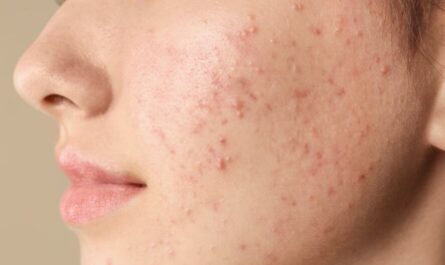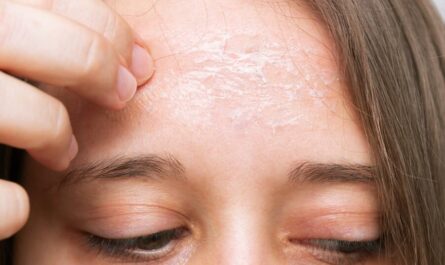Boils are painful and unsightly skin infections that can cause discomfort and inconvenience. While medical treatments are available, many individuals prefer natural remedies to alleviate symptoms and promote healing. In this article, we will explore 16 natural remedies that can help you get rid of boils effectively.
These remedies are easily accessible, and affordable, and often have fewer side effects compared to conventional medical treatments. Whether you’re looking for soothing ingredients from your kitchen or herbal remedies from nature, you’ll find a range of options to choose from.
It’s important to note that while natural remedies can be beneficial, they may not work for everyone or in every situation. If you have a severe or persistent boil, it’s crucial to consult with a healthcare professional for proper diagnosis and treatment. Additionally, if you have any allergies or underlying medical conditions, it’s essential to exercise caution and seek guidance before trying these natural remedies.
What Are Boils?
Boils, medically known as furuncles, are localized skin infections that arise from hair follicles or oil glands. They typically occur when bacteria enter the skin through a cut or hair follicle, leading to an infection.
Boils often start as red, tender bumps and gradually develop into painful, swollen, and pus-filled lesions. They can appear on various parts of the body, such as the face, neck, armpits, buttocks, and thighs.
What Are Carbuncles?
Carbuncles are larger and more severe than boils. They are characterized by a cluster of interconnected boils, forming a larger, swollen, and often more painful lesion.
Carbuncles tend to occur on the back of the neck, shoulders, or thighs. They are a result of a deeper infection that affects multiple hair follicles and surrounding tissues.
Symptoms of Boils
Identifying boils is crucial for proper treatment. Look out for the following symptoms:
- Red, swollen bump: Boils usually start as a red, tender bump on the skin. They can vary in size from a small pimple to a larger, more prominent lump.
- Pain and tenderness: As the boil progresses, it often becomes increasingly painful and tender to touch.
- Pus-filled center: Eventually, a boil will develop a white or yellow pus-filled center, which can be visible through the skin.
- Formation of a head: The boil may mature and develop a distinct raised head or pustule, indicating that it is ready to drain.
- Increased sensitivity and warmth: The surrounding skin may become more sensitive, tender, and warm as the boil develops.
What are the Causes of Boils?
Boils are primarily caused by a bacterial infection, usually by Staphylococcus aureus. This bacterium commonly resides on the skin or in the nose and can enter the body through small cuts, hair follicles, or sweat glands.
When the bacteria invade these areas, they can cause an infection, leading to the formation of a boil. Certain factors can contribute to the development of boils, including:
- Poor hygiene: Insufficient cleansing of the skin can allow bacteria to multiply and increase the risk of infection.
- Compromised immune system: Conditions that weaken the immune system, such as diabetes, HIV/AIDS, or undergoing chemotherapy, make individuals more susceptible to bacterial infections.
- Close contact with individuals who have boils: Direct contact with someone who has a boil increases the risk of spreading the bacteria.
- Underlying skin conditions: Skin conditions like acne, eczema, or folliculitis can increase the likelihood of developing boils due to the presence of already compromised or inflamed skin.
12 Natural Remedies to Get Rid of Boils on Skin
While some boils may require medical intervention, many can be treated effectively at home. Here are some tried-and-true home remedies:
1. Warm Compresses
Applying warm compresses to the affected area can help promote circulation and accelerate the boil’s healing process.
The warmth helps increase blood flow to the area, bringing antibodies and white blood cells to fight the infection.
Additionally, the heat can help soften the skin and encourage the boil to come to a head, eventually leading to drainage.
- Prepare a clean cloth: Soak a clean cloth in warm water and wring out the excess moisture.
- Apply the compress: Place the warm cloth on the boil and hold it gently against the skin.
- Maintain for 10-15 minutes: Keep the compress on the boil for 10-15 minutes. If the cloth cools down, re-wet it with warm water.
- Repeat several times a day: Repeat this process several times a day to help speed up the healing process.
Remember to thoroughly wash the cloth after each use to prevent the spread of bacteria.
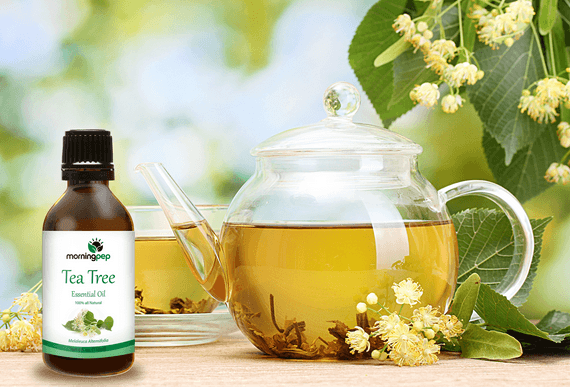
2. Tea Tree Oil
Tea tree oil is a popular natural remedy for various skin conditions, thanks to its antimicrobial and anti-inflammatory properties. It can help combat the bacteria causing the boil and reduce inflammation.
To use tea tree oil for boils, follow these steps:
- Dilute the tea tree oil: Mix a few drops of tea tree oil with a carrier oil, such as coconut oil or olive oil. This is important to prevent skin irritation, as tea tree oil can be potent when used undiluted.
- Cleanse the affected area: Wash the boil and the surrounding skin with mild soap and water, then pat it dry.
- Apply the diluted tea tree oil: Using a cotton swab, apply the diluted tea tree oil directly to the boil.
- Cover with a clean bandage: Cover the boil with a clean bandage to protect it and prevent contamination.
- Repeat 2-3 times daily: Repeat this process two to three times daily until the boil improves.
It’s important to note that tea tree oil can cause skin irritation in some individuals. If you experience any adverse reactions, discontinue use and consult a healthcare professional.
3. Turmeric Powder
Turmeric is a bright yellow spice known for its anti-inflammatory and antibacterial properties. It has been used for centuries in traditional medicine to promote healing and treat various ailments, including skin conditions.
- Make a paste: Mix one teaspoon of turmeric powder with a small amount of water or coconut oil to create a paste with a thick consistency.
- Apply the paste: Apply the turmeric paste directly to the boil.
- Cover with a clean cloth: Cover the boil with a clean cloth or bandage to prevent staining.
- Leave on for a few hours: Allow the turmeric paste to sit on the boil for a few hours.
- Rinse off with warm water: After a few hours, rinse off the turmeric paste with warm water.
- Repeat daily: Repeat this process daily until the boil heals.
Turmeric has a vibrant yellow color that can stain clothing and skin temporarily. However, the stain should fade with time.
4. Castor Oil
Castor oil is derived from the seeds of the castor plant (Ricinus communis). It is known for its anti-inflammatory and analgesic properties, which can help reduce pain and inflammation associated with boils.
- Clean the affected area: Wash the boil and the surrounding skin with mild soap and water, then pat it dry.
- Apply the castor oil: Apply a small amount of castor oil directly to the boil.
- Cover with a clean bandage: Cover the boil with a clean bandage to protect it and prevent contamination.
- Repeat 2-3 times a day: Repeat this process two to three times a day until the boil drains and heals.
Castor oil can sometimes cause skin irritation in some individuals. If you experience any adverse reactions, discontinue use and consult a healthcare professional.
5. Neem Oil
Neem oil is derived from the seeds of the neem tree (Azadirachta indica). It has been used in traditional medicine for its antiseptic and antimicrobial properties. Neem oil can help fight off the infection causing the boil and promote healing.
- Clean the affected area: Wash the boil and the surrounding skin with mild soap and water, then pat it dry.
- Apply the neem oil: Apply a few drops of neem oil directly to the boil.
- Massage the oil gently: Gently massage the neem oil into the skin surrounding the boil.
- Leave on for 15-20 minutes: Allow the neem oil to penetrate the skin for 15-20 minutes.
- Rinse off with warm water: After 15-20 minutes, rinse off the neem oil with warm water.
- Repeat twice a day: Repeat this process twice a day until the boil improves.
Neem oil has a strong, pungent odor that some individuals may find unpleasant. However, the odor dissipates quickly.
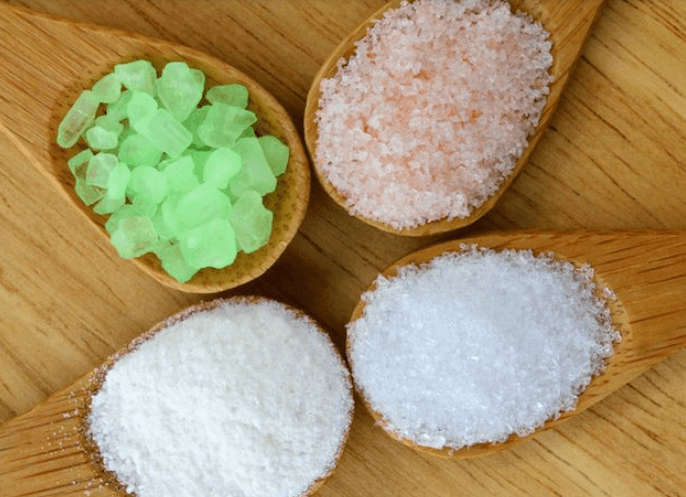
6. Epsom Salt
Epsom salt, also known as magnesium sulfate, has been used for centuries to promote healing and relieve inflammation. It can be beneficial in treating boils due to its ability to draw out toxins and reduce swelling.
- Prepare an Epsom salt solution: Dissolve two tablespoons of Epsom salt in warm water.
- Soak a clean cloth: Soak a clean cloth in the Epsom salt solution.
- Apply the compress: Place the soaked cloth on the boil and leave it on for 10-15 minutes.
- Repeat twice daily: Repeat this process twice a day until the boil starts to drain and heal.
7. Garlic
Garlic has potent antimicrobial and anti-inflammatory properties, making it a natural remedy for boils. It can help fight off the infection causing the boil and speed up the healing process.
- Crush garlic cloves: Crush a few garlic cloves to release their active compounds.
- Apply the garlic paste: Apply the crushed garlic directly to the boil.
- Cover with a clean bandage: Cover the boil with a clean bandage to protect it.
- Leave on for a few hours: Allow the garlic paste to sit on the boil for a few hours.
- Rinse off with warm water: After a few hours, rinse off the garlic paste with warm water.
- Repeat daily: Repeat this process daily until the boil improves.
Note: Garlic may cause skin irritation in some individuals. If you experience any discomfort or redness, discontinue use and consult a healthcare professional.
8. Onion
Onions possess antimicrobial properties and can help draw out the infection from boils. They also have anti-inflammatory properties that can help reduce swelling and pain.
- Slice an onion: Slice an onion into thick slices.
- Place the onion slice on the boil: Place the onion slice directly on the boil.
- Secure with a clean cloth: Use a clean cloth to secure the onion slice in place.
- Leave on overnight: Leave the onion slice on the boil overnight.
- Repeat nightly: Repeat this process nightly until the boil starts to drain and heal.
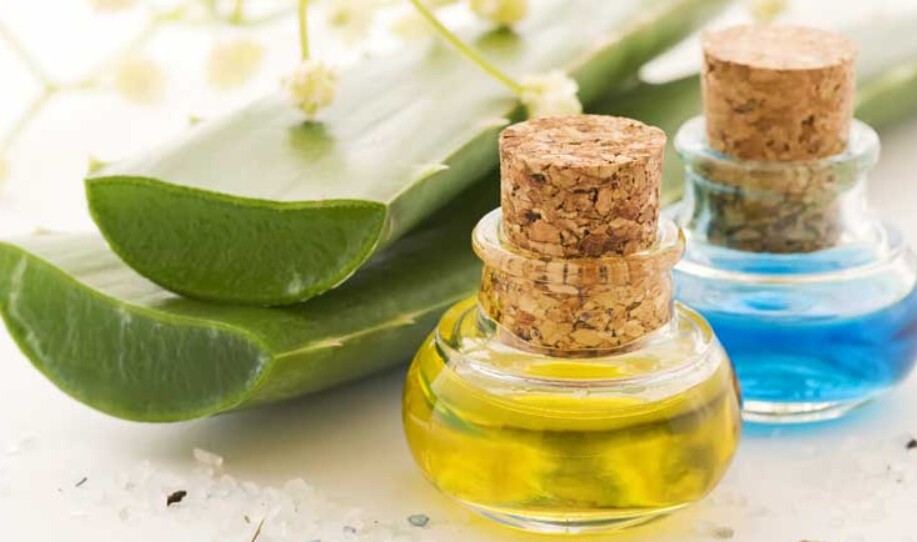
9. Aloe Vera
Aloe vera is well-known for its soothing and healing properties. It can help reduce inflammation and promote the healing of boils.
- Extract fresh aloe vera gel: Cut open an aloe vera leaf and extract the gel from the inner part.
- Apply the gel to the boil: Apply the fresh aloe vera gel directly to the boil.
- Leave on for 20-30 minutes: Allow the gel to sit on the boil for 20-30 minutes.
- Rinse off with warm water: After 20-30 minutes, rinse off the gel with warm water.
- Repeat several times a day: Repeat this process several times a day until the boil improves.
10. Witch Hazel
Witch hazel is a natural astringent that can help reduce inflammation and alleviate pain associated with boils. It also has antimicrobial properties that can assist in fighting off the infection.
- Soak a cotton ball: Soak a cotton ball in witch hazel extract.
- Apply to the boil: Gently apply the soaked cotton ball to the boil.
- Leave on for 15-20 minutes: Leave the cotton ball on the boil for 15-20 minutes.
- Repeat several times a day: Repeat this process several times a day until the boil improves.
11. Apple Cider Vinegar
Apple cider vinegar has antibacterial properties and can help disinfect the area around the boil. It may also help in drawing out the infection and reducing inflammation.
- Dilute apple cider vinegar: Mix equal parts of raw, unfiltered apple cider vinegar and water.
- Soak a cotton ball: Soak a cotton ball in the diluted apple cider vinegar mixture.
- Apply to the boil: Gently apply the soaked cotton ball to the boil.
- Leave on for 10-15 minutes: Leave the cotton ball on the boil for 10-15 minutes.
- Repeat twice daily: Repeat this process twice a day until the boil improves.
12. Calendula
Calendula, also known as marigold, has anti-inflammatory, antimicrobial, and wound-healing properties. It can help reduce inflammation, fight off infection, and promote the healing of boils.
- Prepare a calendula infusion: Steep dried calendula flowers in hot water for 10-15 minutes.
- Soak a clean cloth: Soak a clean cloth in the calendula infusion.
- Apply the compress: Place the soaked cloth on the boil and leave it on for 10-15 minutes.
- Repeat twice daily: Repeat this process twice a day until the boil starts to drain and heal.

How to Prevent Boils In the Future?
Prevention is always better than cure. Here are some tips to help prevent the occurrence of boils:
- Wash your hands regularly: Cleanse your hands thoroughly with soap and water, especially before touching your face or any open wounds.
- Cleanse your skin: Wash your skin regularly, especially after sweating or coming into contact with potentially contaminated surfaces.
- Use an antibacterial soap: Consider using an antibacterial soap or cleanser to reduce the number of bacteria on your skin.
- Avoid harsh chemicals: Opt for skincare products that are free from harsh chemicals, fragrances, and dyes, which can irritate your skin.
- Incorporate nutrient-rich foods: Include a variety of fruits, vegetables, whole grains, lean proteins, and healthy fats in your diet to provide essential vitamins, minerals, and antioxidants.
- Stay hydrated: Drink plenty of water throughout the day to keep your body hydrated and support overall skin health.
- Limit sugary and processed foods: Minimize your consumption of sugary and processed foods, as they can contribute to inflammation and weaken the immune system.
- Avoid sharing personal items: Refrain from sharing personal items, especially if someone in your household or close contact has a boil.
- Maintain personal hygiene items: Keep personal hygiene items, such as towels, washcloths, and razors, separate to prevent cross-contamination.
When to See a Doctor?
While many boils can be managed at home, certain situations warrant a visit to the doctor. Seek medical attention if you experience:
- Boils that are larger than a small marble or golf ball.
- Boils that are extremely painful or interfere with your daily activities.
- Boils that do not improve after a week of home treatment.
- Signs of spreading infection, such as red streaks, fever, or swollen lymph nodes.
A healthcare professional can evaluate the boil, determine the appropriate course of action, and provide any necessary treatments to facilitate healing.


